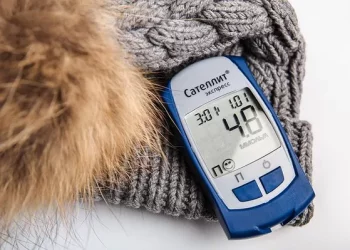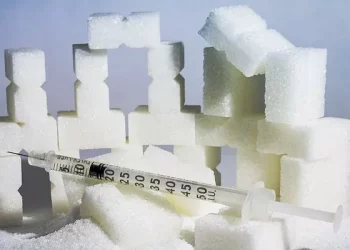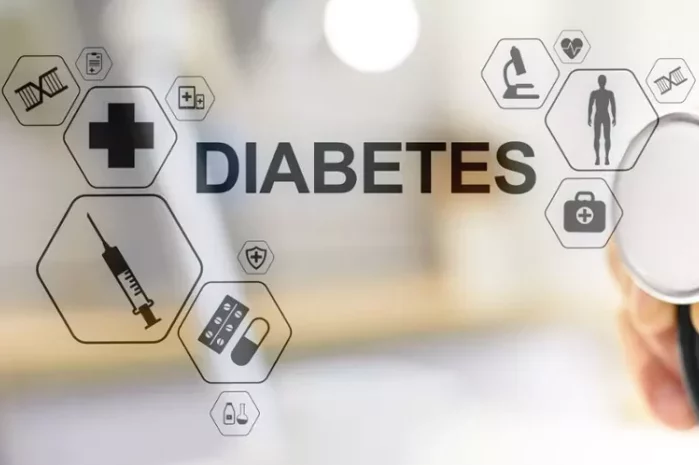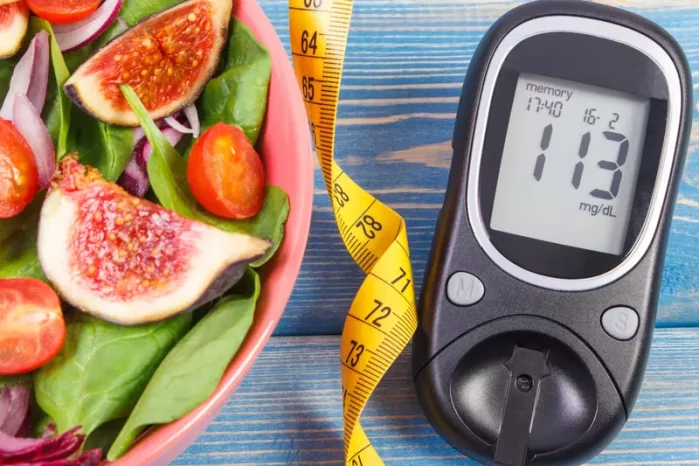Hypoglycemia, or low blood sugar, is a common and often troublesome condition that occurs when your blood glucose levels drop below normal levels, usually under 70 mg/dL. This condition can cause a range of symptoms, from mild shakiness and sweating to more severe symptoms such as confusion, dizziness, and even loss of consciousness. For individuals managing diabetes or other conditions that affect insulin production, knowing what foods to eat during a hypoglycemic episode is crucial for quick recovery and maintaining overall health.
In this article, we’ll explore the best foods to eat when you’re hypoglycemic, helping to restore your blood sugar levels to a healthy range safely and effectively.
Understanding Hypoglycemia
Hypoglycemia typically occurs when the body’s blood sugar levels drop too low. This can happen for various reasons, including skipping meals, overexerting oneself during exercise, or using too much insulin or other diabetic medications. It is essential to address low blood sugar promptly to avoid more serious health issues such as seizures, loss of consciousness, and long-term complications.
Symptoms of hypoglycemia may include:
-
Sweating
-
Shakiness or trembling
-
Rapid heartbeat
-
Hunger
-
Dizziness or lightheadedness
-
Irritability or confusion
Immediate Response to Hypoglycemia
When hypoglycemia occurs, the primary goal is to raise blood sugar levels quickly, but in a controlled and safe manner. Consuming fast-acting carbohydrates is usually the best approach because they provide a rapid source of glucose that can be absorbed into the bloodstream quickly. Ideally, the food or drink should contain approximately 15 grams of carbohydrate to correct mild hypoglycemia.
Some general guidelines for managing hypoglycemia include:
Consume fast-acting carbohydrates: Foods or drinks that are high in simple sugars such as fruit juice, regular soda (not diet), glucose tablets, or candy are ideal.
Wait 15 minutes: After consuming the carbohydrates, wait for 15 minutes to allow the glucose to be absorbed into the bloodstream and check your blood sugar again.
Recheck blood sugar: If symptoms persist and blood sugar levels remain low, it is essential to consume another serving of fast-acting carbs.
Follow up with a balanced snack: Once blood sugar returns to normal, it’s recommended to have a more substantial snack containing a combination of complex carbohydrates and protein to prevent a rebound hypoglycemic episode.
Foods to Eat During a Hypoglycemic Episode
When you’re experiencing hypoglycemia, consuming the right types of foods is crucial for managing your blood sugar effectively. Below, we explore some of the best foods that can help address low blood sugar quickly and safely.
1. Fruit Juices
Fruit juices are one of the most effective ways to raise blood sugar quickly. They contain simple sugars that are rapidly absorbed into the bloodstream, making them an ideal choice when dealing with hypoglycemia.
Orange Juice: One of the most popular choices, orange juice provides a good amount of carbohydrates and vitamin C. Typically, ½ cup of orange juice provides around 15 grams of carbohydrates.
Apple Juice: Similar to orange juice, apple juice is high in simple sugars that can quickly raise blood sugar levels. A ½ cup serving typically contains 15 grams of carbs.
Grape Juice: This juice contains natural sugars, which can provide a rapid glucose boost during hypoglycemic episodes.
Tip: Always choose 100% fruit juice without added sugars or sweeteners, as the added ingredients may affect how your body responds to the juice.
2. Glucose Tablets or Gel
Glucose tablets and glucose gels are among the most effective ways to treat low blood sugar, as they are specifically designed for this purpose. They provide fast-digesting glucose without the additional calories or unnecessary ingredients found in other sweetened foods.
Glucose Tablets: These are available over-the-counter and typically contain 4 grams of glucose per tablet. Consuming 3-4 tablets can quickly raise blood sugar levels. These tablets are small, portable, and easy to carry.
Glucose Gel: A gel form of glucose can also be used in a hypoglycemic episode. One tube of glucose gel typically contains around 15 grams of glucose, which is sufficient to restore blood sugar levels.
3. Regular Soda (Not Diet Soda)
When you’re hypoglycemic, a regular soda (one that contains sugar, not artificial sweeteners) can help restore your blood sugar levels quickly. Unlike diet sodas, which do not contain sugar, regular sodas contain simple sugars that are absorbed rapidly.
Soda Options: Cola, lemon-lime sodas, or ginger ale can all serve as excellent choices to treat low blood sugar, providing 15 grams of carbohydrate in just 4 ounces (½ cup).
Tip: Avoid diet sodas, as they do not contain sugar and won’t help elevate your blood glucose levels.
4. Hard Candies
Hard candies, such as lifesavers or mints, are also effective for treating hypoglycemia due to their high sugar content. These candies are easy to carry and have a long shelf life, making them a convenient option for individuals with diabetes.
Recommended Candies: Lifesavers, jelly beans, or similar hard candies that contain glucose can be consumed in small quantities. Typically, 3-4 pieces of candy provide about 15 grams of carbs.
Tip: Make sure to choose candies that are high in sugar and not sugar-free alternatives.
5. Honey or Syrup
Honey and syrup are both excellent sources of glucose and can be consumed directly or mixed into tea or warm water. These sweeteners provide a fast-acting carbohydrate that helps raise blood sugar levels promptly.
Honey: A tablespoon of honey contains around 17 grams of carbohydrates, making it a quick and effective solution for low blood sugar.
Maple Syrup: Similar to honey, maple syrup contains simple sugars that can quickly elevate blood glucose levels. A tablespoon of maple syrup provides approximately 13-15 grams of carbs.
6. Fresh Fruit
While fresh fruits contain more fiber and may take a little longer to digest than simple sugars, they can still help raise blood sugar levels in cases of mild hypoglycemia. Fruit also provides essential vitamins, antioxidants, and hydration, making it a healthy option.
Bananas: Bananas are a great option for raising blood sugar because they contain both simple sugars and fiber, which helps stabilize glucose levels over time. One medium banana provides around 27 grams of carbs.
Apples: Apples are another good choice, providing fiber and natural sugars to help balance blood glucose levels. A medium-sized apple contains around 25 grams of carbohydrates.
Berries: Strawberries, blueberries, and raspberries are all great sources of natural sugars and fiber. Berries typically provide 10-15 grams of carbs per cup, depending on the type.
Tip: While fruit is a healthy option, be mindful of portion sizes to avoid consuming too many carbohydrates at once.
7. Whole-Grain Crackers with Peanut Butter
Once your blood sugar has been raised, it’s essential to stabilize it to prevent further dips. Whole-grain crackers paired with a small amount of peanut butter provide a balance of carbohydrates, protein, and healthy fats that can help maintain stable blood glucose levels.
Crackers: Whole-grain crackers provide complex carbohydrates, which are digested more slowly than simple sugars and help prevent another hypoglycemic episode. A small serving of whole-grain crackers (around 6-8 pieces) provides about 15 grams of carbs.
Peanut Butter: Peanut butter is a great source of protein and healthy fats that can help stabilize blood sugar levels after an initial glucose boost. A tablespoon of peanut butter contains around 4 grams of protein and healthy fats, with minimal carbs.
8. Yogurt with Fruit or Honey
Greek yogurt or regular yogurt is an excellent source of protein and carbohydrates, which can help stabilize blood sugar levels after addressing a hypoglycemic episode. The addition of fresh fruit or honey can help raise blood sugar quickly if needed.
Greek Yogurt: Greek yogurt is higher in protein and lower in sugar than regular yogurt, making it an excellent choice for a balanced snack. A small serving of Greek yogurt (½ cup) contains about 10 grams of carbohydrates.
Toppings: Adding a drizzle of honey or a small portion of fresh fruit can help increase the carbohydrate content of the yogurt, providing a quick glucose boost if needed.
9. Smoothies
Smoothies made with fresh fruits, yogurt, or a combination of both can be a nutritious way to manage low blood sugar while also providing hydration and essential nutrients. To ensure that the smoothie contains enough carbohydrates to correct hypoglycemia, include a mix of high-carb fruits and natural sweeteners.
Smoothie Ingredients: Bananas, berries, and other fruits can be blended with yogurt or milk to create a smoothie. A typical fruit-based smoothie can contain 15-30 grams of carbs per serving, depending on the ingredients used.
Tip: Avoid adding sweeteners such as artificial sugar substitutes, as they will not help elevate blood glucose levels.
10. Milk
Milk is a good option for raising blood sugar because it contains both natural sugars (lactose) and protein. A glass of milk can provide about 12 grams of carbohydrates, making it an effective choice to correct mild hypoglycemia.
Whole or Skim Milk: Both whole milk and skim milk are effective for managing low blood sugar, though skim milk may be lower in calories. A cup of milk contains around 12-15 grams of carbohydrates, depending on the type.
Tip: Milk is especially useful for individuals who are lactose tolerant, but those with lactose intolerance should opt for lactose-free milk or alternatives such as almond or soy milk.
Conclusion
Managing hypoglycemia is an essential skill for individuals with diabetes or those at risk of experiencing low blood sugar. By understanding which foods are most effective in raising blood sugar levels quickly, individuals can ensure that they are prepared to handle these episodes safely and effectively. Fast-acting carbohydrates like fruit juice, glucose tablets, and regular soda are excellent immediate solutions for hypoglycemia, while whole foods like fruit, yogurt, and whole-grain crackers can help maintain stable blood sugar levels. Always remember to follow up with a balanced snack to prevent another dip in blood sugar.
Consulting with a healthcare provider or a registered dietitian is essential to develop a comprehensive plan for managing hypoglycemia and maintaining healthy blood sugar levels.
Related topics:
What are the Healthiest Fruits for Diabetics


























